




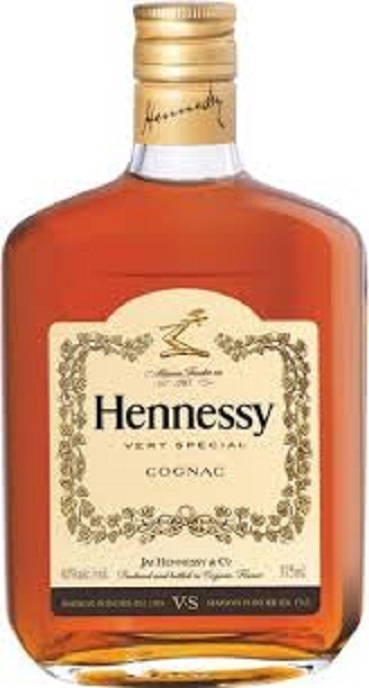






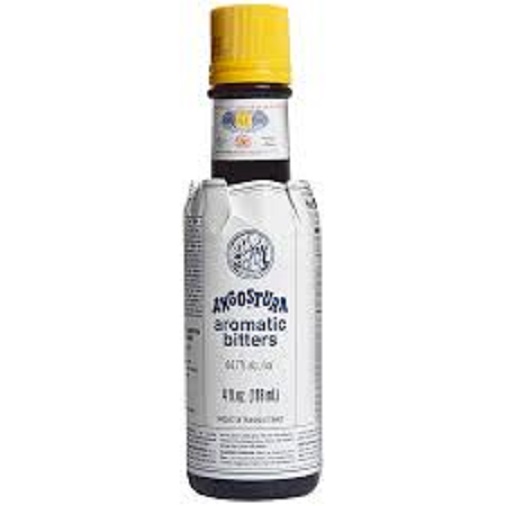























TLW's Liquorscope™ (Liquor Historyscope) |
By T.L. Winslow (TLW), the Historyscoper™ |
© Copyright by T.L. Winslow. All Rights Reserved. |
Original Pub. Date: July 30, 2016. Last Update: Aug. 25, 2025. |




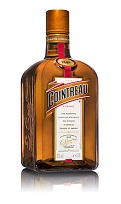




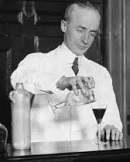
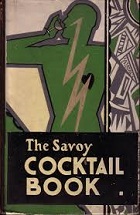


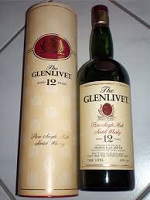

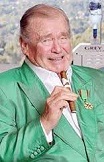





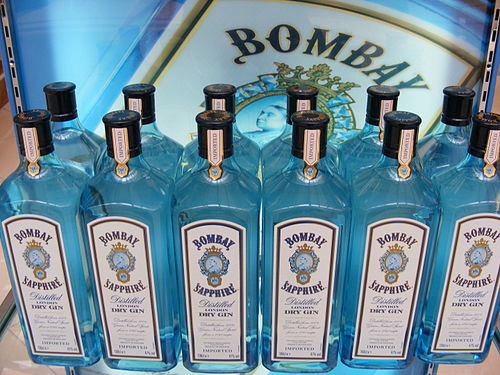

Westerners are not only known as history ignoramuses, but double dumbass history ignoramuses when it comes to liquor (fermented alcoholic beverage) history, incl. Whisky (Whiskey), Gin, Vodka, Brandy, Tequila et al. Since I'm the one-and-only Historyscoper (tm), let me quickly bring you up to speed before you dive into my Master Historyscope.


On July 28, 432 Pope Celestine I sends Scottish-born Roman future monk Patricius, AKA (St.) Patrick (387-461) (who was captured by Irish pirates in the Severn Estuary at age 16 along with thousands of others, and lived as their slave on townless roadless Pirate Island Ireland as a shepherd in Mayo County for six years, developing a love for the Emerald Isle, then escaped to England and became the pupil of Germanus of Auxelle) back to Ireland as bishop after special training to help Palladius in converting the Druids and Arians; he lands in Saul (Gael. "Sabhall Phadraig" = Patrick's Barn) in County Down E of Downpatrick ("Patrick's Stronghold") in SW Ireland, quickly converting local chieftain Dichu, who gives him a barn for church services; allegedly the Druids had predicted his arrival with the prophecy: "Adze-head [the Irish form of tonsure, done to the front part of the head] will come with a crook-head staff [crosier]; in his house head-holed [the first reference to the chasuble, named after a cottage or casa] he will chant impiety from his table [the altar]; from the front [the eastern] part of his house all his household [attendant clerics] will respond, 'So be it! So be it!' [Amen! Amen!]", as mentioned in Muirchu's 683 Life of St. Patrick; after traveling to Donegal in NW Ireland, home of clans governed by Niall of the Nine Hostages, he converts Clan Connail (Dalaigh), becoming his first clan; after he blesses the clan's members, the sign of a cross allegedly appears on the chieftain's shield, becoming their logo; too bad, Patrick allegedly introduces the distillation of usquebaugh (whisky) (whiskey) ("water of life") from oat and barley beer to the Irish, causing the Dalriadic Scots to later bring it with them to Scotland; Ireland is ruled by king Loigaire MacNeill, who presents Patrick with great obstacles, and after lighting a paschal fire on the Hill of Slane opposite the king's council on the Hill of Tara and inviting the Druids to do their worst, he goes on to baptize 120K and found 300 churches in Meath, Ulster, and Connaught, establishing the bishopric of Armagh in Ulster; it takes a cent. after his 461 death to convert all of Ireland, meanwhile turning it into a center of learning, causing it to later begin sending mendicant peregrini (wanderers for Christ) throughout Europe as far as Kiev, wearing the half-corona hairstyle (bald across the front), rough-spun habits, and cowls with rope belts and sandals, bringing literacy to Dark Age Europe, eventually setting up stalls at Charlemagne's court, shouting "Knowledge for sale"; St. Patrick allegedly creates the Celtic Cross by adding the Irish Sun.
In 1174 Henry II of England visits Ireland uninvited and records the use of whiskey (aquae vitae).

About 1300 Spanish alchemist and papal physician Arnau (Arnaud) (Arnaldus) de Villanova (Villanueva) (1238-1311) invents Brandy (Brandywine) (AKA Fire Wine) by distilling wine; enterprising copycat Irish monks soon invent Usquebaugh (Uisgebeatha) (Whisky) (Whiskey) (Gael. "water of life") by distilling fermenting grain - when does the party start?

In the 14th cent. the anise-flavored aperitif Ouzo is created by Greek Christian monks on Mount Athos, originally under the name tsipouro, growing into a family incl. pastis, sambuca, mastika, raki, and arak; they all turn milky white after the the addition of a little water. After the Greek Rev. of 1821 frees the Greeks from Turkish domination, the first commercial ouzo distillery is founded in Tyrnavos in 1856, becoming known as "a substitute for absinthe without the wormwood".
In 1347-51 the Black Death (plague) causes distilled spirits such as brandy and whiskey to be consumed in a vain attempt to ward off infection, inflicting Europe with an endless alcoholism problem to modern times?
In 1386 the Genovese Embassy introduces aqua vitae (water of life) to the Moscow Grand Duchy, acquainting them with the "pernicious drink" (good antifreeze for the blood?) Vodka - so the Italians did to the Russkies what the Euros did to the American Indians?
In 1405 the word "vodka" is first mentioned in Akta Grodzie, an official document of the Polish Palatinate of Sandomierz to mean medicines and cosmetic products; he beverage is called gorzalda (Old Polish "gorzec" = to burn); the first mention of the word "vodka" in Cyrillic appears in 1533, referring to a medicinal drink brought to Kieven Rus from Poland by merchants.
In 1429 Vodka is brought to Moscow by foreign visitors, who tout it as a panacea; in 1430 a monk named Isidor of the Chudov Monastery makes the first Russian vodka recipe, which becomes a monopoly of the grand duchy of Moscow.



About 1450 after the English are driven out of Bordeaux, Irish mercenary ? Hennessey stays and begins producing cognac; the modern-day Hennessy (Jas Hannessee & Cie.) cognac distillery is founded in 1765 in Charente, France by Irish Jacobite military officer Richard Hennessy (1724-1800) from Cork; in 1817 George IV of England commissions Hennessy V.S.O.P., which is blended by Jean Fillioux, whose family become hereditary master blenders; Hennessy goes on to become the world's #1 cognac producer (60% of the market).
In 1494 the first mention of malted barley whiskey production in Scotland.
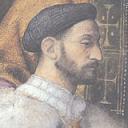
In 1525 Amaretto (It. "a little bitter"), made of apricot kernels and brandy is invented by a young widowed innkeeper, who presents it to Leonardo da Vinci's pupil Bernardino Luini (1475-1532), who is painting frescoes for the church at Saronno.
In 1533 the first Tsar's kabak is opened in Moscow, serving vodka and other liquors, becoming known as Russia's taverns.


On Feb. 13, 1565 Spanish conquistador Miguel Lopez de Legazpi (1502-72) and his navigator (Augustinian friar) Andres de Urdaneta (1498-1568) arrive from Acapulco, New Spain (Mexico) in the Philippines and on June 24, 1571 found Manila on Manila Bay in the South China Sea (modern pop. 1.8M/12.8M); in July they discover a good route back to Acapulco, which becomes known as Urdaneta's Route, and Legazpi returns as royal gov. of the Philippines to establish the "China route" through the "Spice Islands"; Augustinian friars follow and become a force in the islands, later joined by other orders, incl. Franciscans, Jesuits, Dominicans, and Recollects; tequila (distilled agave nectar) begins to be exported from Mexico via the Camino Real through the Sierra Madre Mts.; galleons are built in Barra de Navidad for the route from Veracruz to Spain.
In 1608 Bushmills Distillery in Bushmills, County Antrim, Northern Ireland is licensed by a landowner, after which a co. builds a commercial distillery in 1784, becoming the world's oldest licensed whiskey distillery; in 2014 it is acquired by Jose Cuervo.

In 1691 French Huguenot refugee Joannes Nolet founds Ketel (Dutch "pot still") One Vodka(originally the Nolet Distillery) in Schiedam, Netherlands, which becomes known as the spirits capital of the world. In 1983 10th gen. descendant Carolus Nolet introduces 80 proof Ketel One Vodka, specifically crafted for the U.S. market.


The original Supersize Me? On Aug. 4, 1693 blind French Benedictine monk Dom Pierre Perignon (1639-1715) invents Champagne, which is later sold in supersized bottles called Magnum (2x), Jeroboam (4x), Rehoboam (6x), Methuselah (8x), Salmanazar (12x), Balthazar (16x), and Nebuchadnezzar (20x) (My Judy Really Makes Splendid Belching Noises); actually, he didn't invent sparkling wine, just taught blending skills and figured out how to bottle the stuff in reinforced glass bottles sealed with Spanish corks?
In 1737 yellow-green 142 proof Chartreuse Elixir is first distilled from 130 plants by the cloistered Carthusian monks in Chartreuse, France (founded 1084) from an ancient ms. given to them in 1605; for beverage use, 110 proof Green Chartreuse is also sold.
In 1762 the 1762 Gautier Cognac becomes the oldest bottled cognac to survive to modern times.

In 1783 Evan Williams of Louisville, Ky. begins distilling Bourbon Whiskey, becoming the first in Ky.?; in the mid-1900s the brand is resurrected; it is first distilled and aged in the U.S. on the banks of the Ohio River in Louisville, Scott County, Ky. by Baptist Rev. Elijah Craig?; in 1785 Bourbon County (named after the French royal family) becomes part of Va. until 1792, when it becomes part of the new Commonwealthy of Ky., becoming known as Old Bourbon and becoming famous for corn-based Bourbon whiskey, which is shipped from Limestone, Ky. (modern-day Maysville, Mason County, Ky.) down the Ohio River, where it is sold in the port of New Orleans on Bourbon St.


In the late 18th cent. light green 100-proof anise-flavored addictive Absinthe liqueur, based on the wormwood plant is created in Neuchatel, Switzerland by French physician Pierre Ordinaire, becoming super-popular among the bohemians of Paris incl. Henri de Toulouse-Lautrec, Arthur Rimbaud, Charles Baudelaire, Ernest Hemingway, James Joyce, and Lewis Carroll for its purported psychoactive properties, causing it to become known as "La fee verte" ( la fée verte) (the Green Fairy) until it gets banned in the U.S. and most of Europe by 1915 for its thujone content, which by the 1990s is proved to be greatly exaggerated, causing sales to be relegalized, with almost 200 brands being produced in a dozen countries by 2000.
On Aug. 1, 1794 after whiskey tax protesters in W Penn. terrorize Ft. Fayette Capt. William Faulkner after he rents his house to whiskey-tax inspector Capt. John Neville, 6K whiskey rebels converge on Braddock's field army fort outside Pittsburgh, and their leader Bradford touts Robespierre as an ideal model to follow, causing the crowd to erect guillotines for tax inspectors; Washington (the only Am. Founding Father to commercially operate a whiskey distillery) orders the rebels to disband by Sept. 1; after they fail to do so, in Sept. Washington (a whiskey distiller himself, becoming the biggest in the country in 1798, at 11K gal./year) leads a federalized militia army into Penn. to suppress the Whiskey (Whisky) Rebellion (Insurrection), arriving on Oct. 4 at Carlisle, Penn., home of Molly Pitcher and DOI signers George Ross, James Smith, and James Wilson, and setting up HQ with an army of 3K men that grows to 13K; the rebellion then fizzles, and at the end of Oct. Washington returns to Philly, leaving Alexander Hamilton in charge of the army, which under maj. Gen. (since 1793) Daniel Morgan mops up the resistance and arrests a dozen leaders; two are convicted of treason, but Washington pardons them, and Jefferson pledges to repeal the tax, calling the whole affair "Hamilton's insurrection"; the tradition of moonshiners making untaxed whiskey and foiling revenuers in the backwoods U.S.A. begins; some distillers move to Bourbon County, Ky., where they begin making Bourbon (corn whiskey).

 :
:
In 1795 Jim Beam (originally Old Jake Beam Sour Mash) brand Kentucky straight bourbon corn whiskey is founded in Ky. by the German immigrant Böhm family, starting with Johannes "Jacob" Beam (1760-1834); in 1880 after moving to Nelson County to utilize its railroad network, it is first bottled and sold under the brand name "Old Tub";in 1843 it is renamed "Jim Beam" in honor of James Beauregard Beam (1864-1947), who rebuilt the business after Prohibition ended, rebuilding the distillery in 1933-4 in Clermont, Ky.; bottle labels bear the statement "None Genuine Without My Signature" with the signature James B. Beam; the brand is purchased by Fortune Brands followed in 2014 by Suntory Holdings.
On May 13, 1806 the first definition of a Cocktail as an alcoholic beverage is pub. in "The Balance and Columbian Repository" of Hudson, N.Y.; it was referred to only as a beverage in "The Farmers Cabinet" of 1803.


On Jan. 1, 1817 Simon Bolivar lands in Barcelona, Venezuela (Orinoco region) with a small force of refugee insurgents from Haiti in an attempt to liberate it from Spain, promising to free the slaves and give confiscated properties to his victorious troops, and on Feb. 16 he scores a quick V against a Spanish royalist army at the Battle of Barcelona, establishes a rev. govt. at Angostura (founded 1764) (renamed Ciudad Bolivar in 1846), then wins a number of military Vs during the year; in 1824 Angostura Bitters are first made by pro-Bolivar German-born military surgeon Johann Gottlieb Benjamin Siegert (1796-1870) to help his patients.
In Jan. 1821 Pierce Egan pub. Life in London, or, The Day and Night Scenes of Jerry Hawthorn Esq. and his Elegant Friend Corinthian Tom, along with the Sept. 1821 stage play Tom and Jerry, or Life in London, which introduces the Tom and Jery rum-spiked eggnog drink, which becomes a favorite for Christmas Pres. Warren G. Harding.
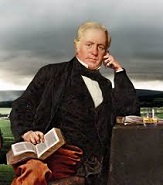

In 1823 the English Parliament passes the 1823 Excise Act, making commercial distillation of whiskey more profitable and imposing punishments on landowners when unlicensed distilleries are found on their lands; in 1824 former moonshiner George Smith (1792-1871) becomes the first person to obtain a distillery license under the new law, founding Glenlivet Distillery in Moray, Scotland, "The single malt that started it all", offering 12 to 25-y.-o. varieties, becoming the 2nd best-selling brand on Earth and the best-selling brand in the U.S., producing 6M bottles/year; in 1977 it is acquired by Seagram; in 2000 French co. Pernod Ricard acquires it.
In 1825 the British govt. reduces its duty on spirits, causing gin consumption to rise from 4,132,263 gal. this year to 9,311,624 gal. next year, with a corresponding increase in crime and pauperism; gin goes for 3.5 pence/pint, vs 5 pence for 2 pints of beer, causing beer brewers to ally with temperance groups, touting beer as a temperance drink, a source of nourishment and calories for the working man, safer than water, etc.; meanwhile in 1822 Lord Brougham disses tea drinking as leading "not to the cultivation of one single acre of English land", while beer is "a good, sound, wholesome constitutional beverage of the country."

In 1834 orange-flavored Triple Sec (triple-distilled) liqueur is invented in Saumur, France by Jean-Baptiste Combier using sun-dried orange skins from Saint-Raphael, Haiti, going on to become a key ingredient in the Margarita.
*
In 1849 Cointreau Distillery is founded in Angers, France by confectioner Adolph Cointreau and his brother Edouard-Jean Cointreau, selling guignolet cherry liqueur before introducing the wondrous 80-proof orange-flavored Cointreau liqueur in 1875 (made with bitter and sweet orange peels), with sales growing to 13M bottles/year by 2017; it claims to have been part of the original recipes for margaritas and cosmopolitans.
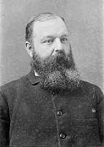
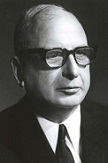
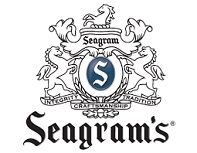
In 1857 Joseph E. Seagram and Sons starts as a distillery founded in Waterloo, Ont., Canada; in 1869 Canadian businessman Joseph Emm Seagram (1841-1919) becomes a partner, rising to sole owner in 1883; in 1924 Canadian Jewish businessman Samuel Bronfman (1889-1971) and his brothers found Distillers Corp. Ltd. in Montreal, Quebec, Canada, which booms during the 1920s because of Prohibition in the U.S. by shipping liquor to Saint Pierre and Miquelon off Newfoundland for transfer to U.S. bootleggers from N.Y., N.J. et al.; in 1928 Distillers Corp. acquires Seagram, surviving the end of Prohibition in 1933 by selling aged whiskeys and paying the U.S. govt. $1.5M to settle delinquent excise taxes, with Bronfman introducing quality whiskies incl. Chivas Regal and Royal Salute, creating Crown Royal in 1939 after mixing 600 samples to commemorate a visit to Canada by George VI and Queen Elizabeth; in 1982 it acquires a 32.2% share in Conoco, which calls in DuPont to rescue it, causing Seagram to end up with a 24.3% share of DuPont, growing to the largest single shareholder in 1995 with four seats; in 1986 it launches an ad campaign for its Golden wine coolers starring Bruce Willis, causing it to rise from #5 to #1 among distillers by 1988; in 1987 it takes over French cognac maker Martell & Cie for $1.2B; too bad, after rising to the largest owner of alcoholic beverages in the world, on Apr. 6, 1995 DuPont announces a buyback of its shares for $9B despite accounting for 70% of Seagram's earnings, after which Seagram begins a downhill slide despite acquiring MCA, owner of theme parks and Universal Pictures, along with PolyGram and Deutsche Grammophone; in 2000 the entertainment div. is sold to Vivendi, and the beverage div. (250 drink brands) to Pernod Ricard and Diageo; in 2002 Coca-Cola acquires its line of mixers.


In 1860 dark red Campari amaro apertif created from the infusion of herbs and fruit in alcohol and water (60+ ingredients) is invented by Gaspare Compari (1828-82) of Novara, Italy, with its color coming from carmine dye, derived from crushed cochineal insects.


On Feb. 4, 1862 Bacardi Ltd. (originally Bacardi, Boutellier, and Co.) white rum distillery is founded in Cuba by Sitges (near Barcelona), Spain-born businessman Don Facundo Bacardi (Facund Bacardí i Masó ) (1813-86), who perfects a unique distillation process using charcoal filtration, a proprietary single yeast strain, parallel distillation process, and oak barrel aging, and combines it with a cool marketing program based on a bold "Macardi M" (Bacardi Masso) signature on each shipment along with a fruit bat logo, based on a colony seen hanging in his distillery rafters; too bad, three wars of independence from Spain split the family and hamper business growth.

In 1862 Sackets Habor, N.Y.-born bartender ("Jupiter Olympus of the Bar") Jeremiah P. "Jerry" Thomas (1830-85) pub. Bar-Tender's Guide (How to Mix Drinks; or, The Bon-Vivant's Companion), becoming the first drink book pub. in the U.S., containing 10 cocktail recipes using bitters to differentiate them from punches and cobblers, making him an instant star, with his Blue Blazer flaming whiskey drink at the El Dorado in San Francisco causing him to earn $100 a week at the Occidental Hotel in San Francisco, more than the U.S. vice-pres.; the 1876 ed. contains the first pub. recipe for the Tom Collins; naturally, he claims to have invented the Tom & Jerry.


In 1864 former serf Pyotr Arsenievich Smirnov (1831-98) founds Smirnoff (originally PA Smirnov) brand vodka in Moscow, Russia, pioneering charcoal filtration in the 1870s along with newspaper ads and charitable contributions to the Orthodox clergy to stop anti-vodka sermons, capturing two-thirds of the market by 1886 and making a fan of the tsar, becoming one of the wealthiest men in Russia; in 1898 he is succeeded by his 3rd son Vladimir Smirnov (1875-1939); too bad, in 1904 the tsar nationalizes the Russian vodka industry, forcing Vladimir Smirnov to sell-out, and after the 1917 Oct. Rev. the whole family flees to Constantinople, followed in 1924 by Lwow, Poland (modern-day Lviv, Ukraine), changing the brand name to Smirnoff; in 1933 Vladmir sells the North Am. rights to Russian immigrant Rudolph Kunett, who in 1939 sells out to John Martin, pres. of Heublein Co. (makers of A1 Steak Sauce), marketing it as "white whiskey" complete with whiskey corks; in 1982 Heublein Inc. is acquired by R.J. Reynolds for $1.4B, and in 1987 it sells the Smirnoff div. to Grand Metropolitan, which merges with Guinness in 1997 to form Diageo; the brand becomes the world's best-selling distilled spirit brand by 2006 until 2015, when it is passed by India's Officer's Choice.


In 1865 Juan Serralles Colon (Colón) (1836-1921) founds Don Q Rum in Puerto Rico, using sugar from his own 300-acre Hacienda Mercedita, worked by slaves and free labor.


In 1866 Jasper Newton "Jack" Daniel (1849-1911) establishes a whiskey distillery in dry Lynchburg, Tenn. and perfects his Kentucky bourbon formula.

In 1870 Hennessey X.O. (Extra Old) Cognac begins to be produced for the lucky rich.

In 1880 80-proof Grand Marnier orange-flavored liqueur is invented by Alexandre Marnier-Laposolle of France, made of cognac brandy, bitter orange, and sugar.
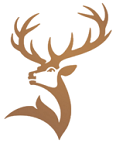
In 1886 Glenfidditch (Gael. "valley of the deer") Speyside single malt Scotch whisky is founded in Dufftown, Scotland by William Grant & Sons, becoming the world's best-selling single malt whiseky; the logo is a stag.
In 1894 Dmitry Mendeleev of Russia discovers that vodka is best when formulated to exactly 80 proof (40% alcohol), becoming the std. for modern vodka.

In 1896 Galliano (Liuore Galliano L'Autentico) sweet herbal liqueur containing 30 herbs incl. anise is created by Tuscan distiller Arturo Vaccari, who names it after Italian army officer Giuseppe Galliano; the light yellow liqueur is packaged in cool tall slender bottles. In 1969 the Harvey Wallbanger mixed drink cocktail consisting of a sscrewdriver with a splash of Galliano is invented by McKesson Imports Co., headed by George Bednar, complete with a cartoon char. created by graphic artist William J. "Bill" Young of Lima, N.Y., with the slogan: "Harvey Wallbanger is the name. And I can be made." It becomes a big hit in the U.S. in the 1970s.

On June 18, 1897 after it opened earlier in the year to exploit a federal loophole in state alcohol monopoly laws, the original package store of tobacconist Jerry Solomon Pinkussohn (1852-1922) in Charleston, S.C. is seized by state officials, launching a long winning legal battle for privately-owned liquor stores.
In 1919 after Ky. adopted prohibition in 1918, the bourbon industry (26 distilleries) in Bourbon County, Ky. is wiped out; no distillery opens there until late 2014.


In 1930 Savoy Hotel (London) bartender Harry Craddock (1876-1963) pub. The Savoy Cocktail Book, which becomes the Bible of mixology.


In 1932 17 years after absinthe was banned, French industrialist Paul Louis Marius Ricard (1909-97) of Marseille, France begins selling the anise-flavored aperiif Pastis, sans yummy wormwood with a stronger anise flavor coming from the Asian spice star anise along with liquorice root rather than the traditional Mediterranean green anise and fennel.
On May 4, 1935 (Kentucky Derby Day) Stitzel-Weller Distillery in Shively (near Louisville), Key. opens, run by Julian "Pappy" Van Winkle Sr., producing Pappy Van Winkle's Family Reserve brand bourbon whiskey, aged for 15, 20, or 23 years, which goes on to become the #1 bourbon on Earth; it closes in 1972, but Julian Van Winkle Jr. resurrects the brand and carries on; in 2002 Sazerac Co. at the Buffalo Trace Distillery in Frankfort, Ky. begins producing it.


In 1935 Jagermeister (Jägermeister) (Ger. "master hunter", "gamekeeper") herbal liqueur, made with 56 herbs and spices and bottled at 70 proof U.S. is introduced by Curt Mast (1897-) of Wolfenbuttel, Germany, starting out as an after-dinner digestive aid until Am. liquor importer Sidney E. Frank (1919-2006) begins selling it to the youth market as a party drink, becoming a big hit; Frank goes on to promote Grey Goose vodka and become a billionaire.

In 1936 Kahlua (Kahlúa) (Nahuatl "house of the Acolhua people") brand coffee-flavored liqueur is introduced by Pedro Domecq of Mexico.
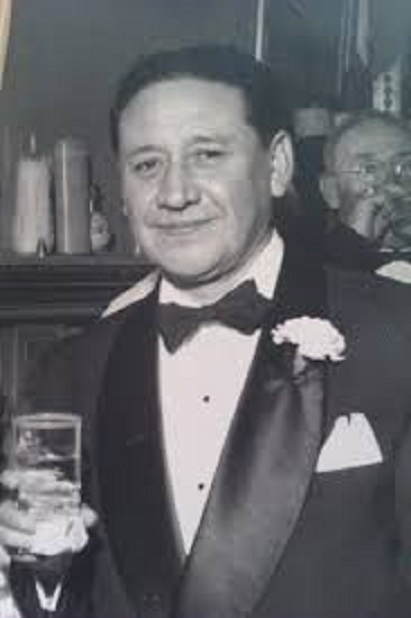
In 1938 Rancho La Gloria bar owner Carlos "Danny" Herrera (-1992) near Tijuana, Mexico invents the Margarita (Sp. for daisy or Marjorie), named for Ziegfeld actress-dancer Marjorie King; it is based on the Tequila Daisy cocktail, invented in the Prohibition Era of the early 1930s and enjoyed by visitors to Mexico from the U.S.?
In the 1940s Shannon Airport (Ireland) bartender Michael Collins invents Irish Coffee?


In the 1940s (1946?) Yukon Jack liqueur, made of Canadian whiskey and honey begins to be marketed in the U.S. by Heublein Inc., named after "Father of the Yukon/Alaska" Leroy Napoleon "Yukon Jack" McQuesten; the Canadian version is 80 proof, the U.S. version is 100 proof.
During WWII the Screwdriver cocktail consisting of orange juice with vodka becomes popular, nourished by folk tales about airplane or other mechanics using their screwdrivers to stir it.

In 1952 the bitter amaro apertif Cynar is launched in Italy, named after its main ingredient artichoke (Cynara scolymus).
In 1965 Tequila, the nat. drink of Mexico (named after the town of Tequila, Jalisco) begins rising in popularity in the U.S., climbing 1,500% in the next decade.

In 1972 bartender Robert "Rosebud" Butt of the Oak Beach Inn in Babylon, Long Island, N.Y. allegedly invents Long Island Iced Tea, made with equal parts of vodka, gin, tequila, rum, and triple sec, along with sour or sweet-sour mix and a splash of cola or iced tea.
In 1975 UCLA chemist Ben M. Zuekerman discovers space alcohol; in 1995 Tom Millar, Geoffrey MacDonald, and Holf Habing discover the gigantic alcohol cloud G34.3 10K l.y. from Earth in the Aquila Constellation, 1K the size of the Solar System, with enough alcohol to make 400TT (400E24) pints of beer.

In 1986 Bombay Sapphire brand gin is introduced by Internat. Distillers and Vintners of England, which in 1997 sells out to the Bombay Spirits Co. (subsidiary of Bacardi) of Laverstoke Mill, Hampshire, England, known for its violet-blue Star of Bombay color with an image of Queen Victoria on the label.


In 1997 Grey Goose brand vodka is launched in France by Am. Jagermeister tycoon Sidney E. Frank (1919-2006) begins selling it to the youth market as a party drink, with its cool smoked glass bottle displaying French geese in flight and shipped in wooden wine crates, becoming a big hit.